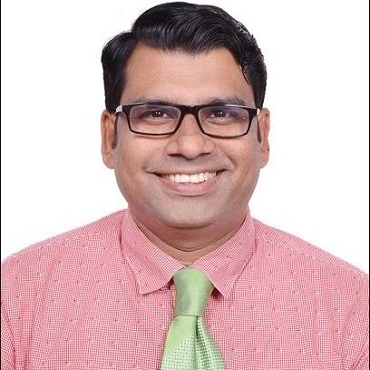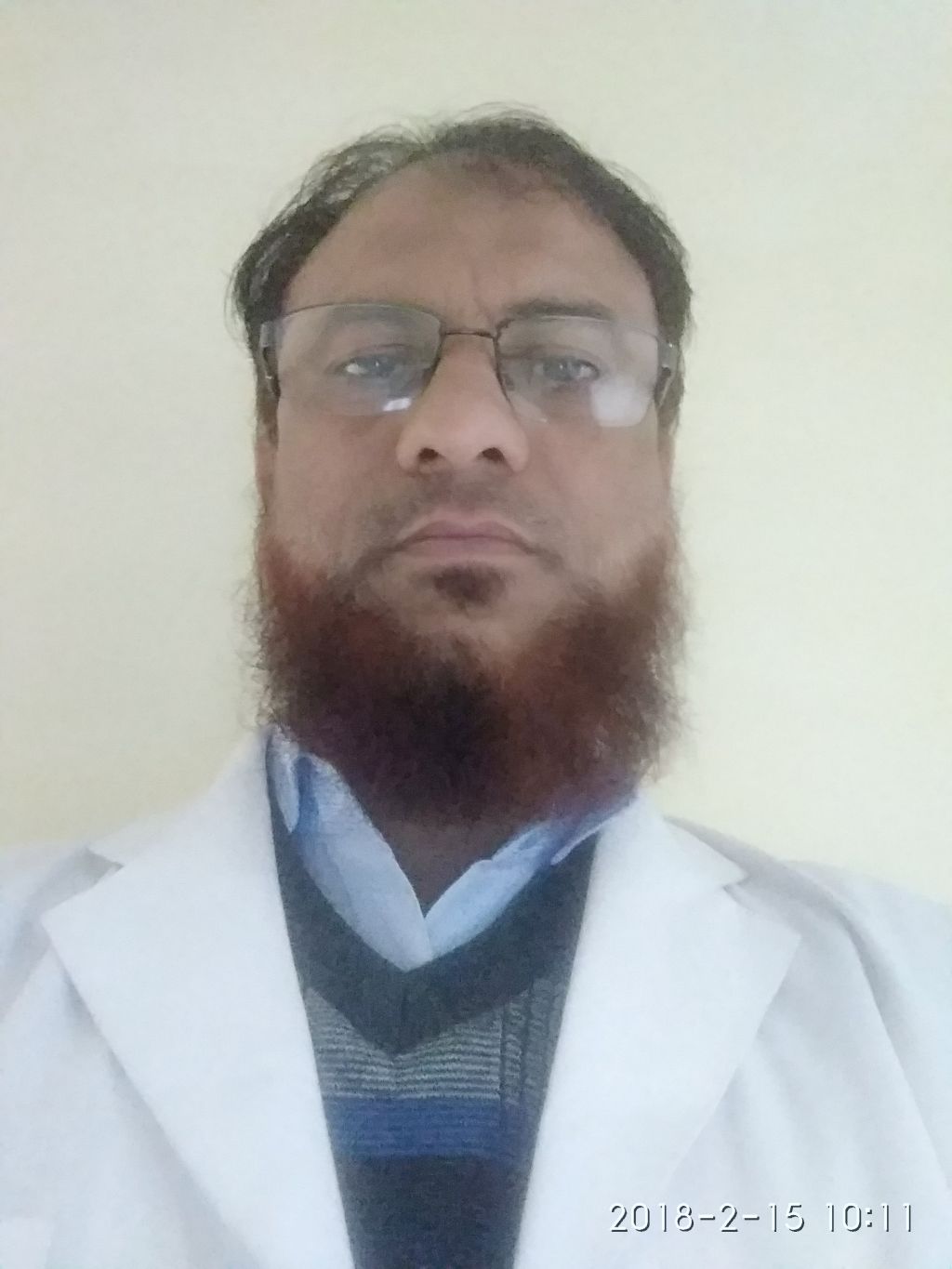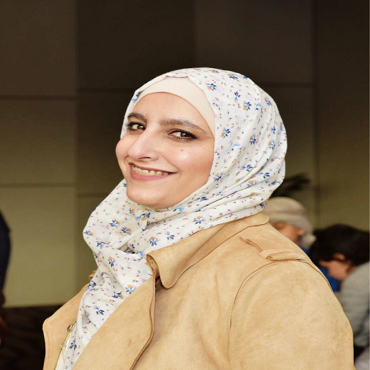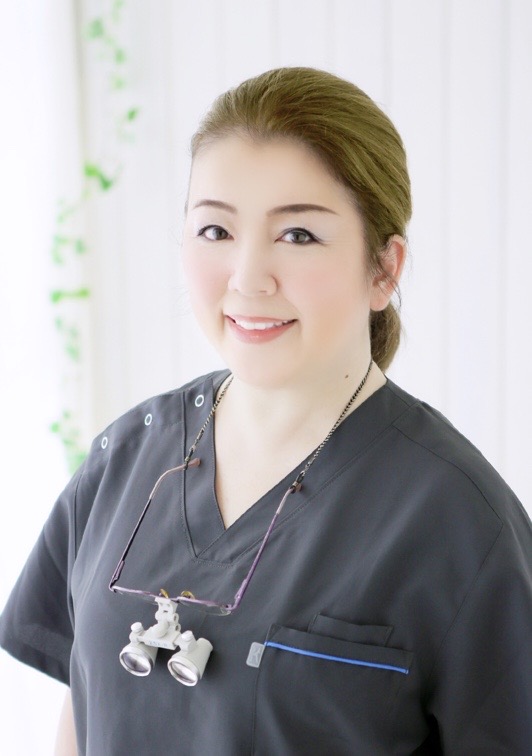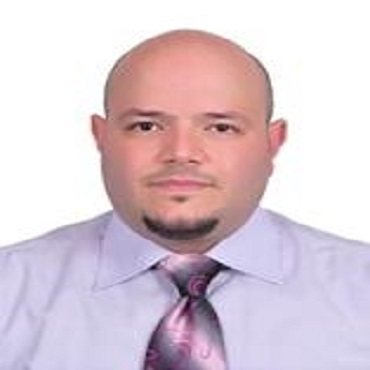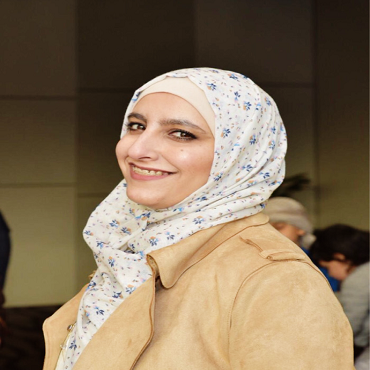Scientific Program
Keynote Session:
Title: Oro-facial reconstruction and the myth of dental infections
Biography:
Jehad Al Sukhun is a British / Jordanian oral and maxillofacial surgeon with a Master’s degree in oral and maxillofacial surgery from the University of Manchester and a PhD from the University of London in the United Kingdom. He has gained a number of fellowships and professional memberships in the United States, United Kingdom and Australia. During his PhD studies at the University of London, he obtained in-depth knowledge and experience in maxillofacial Implantology and computer aided surgery using Finite Element Analysis. He worked at well reputed academic University Hospitals in the UK.
Abstract:
Periapical infections / radiolucencies often suggest the presence of odontogenic pathosis, usually inflammatory granulomas or cysts. The high frequency of such lesions tends to lead clinicians to arrive at a diagnosis without completing a comprehensive assessment of the patient or carrying out the full range of available diagnostic tests. We present several rare cases of cancer lesions and their management, which were misdiagnosed and treated initially as periapical lesions because of its unusual location and clinical manifestations.
The goals of the repair of the maxillofacial skeleton defects are to restore its three-dimensional shape, contour and function. Approaches vary from conventional management of maxillofacial defects, resurfacing the inner cheek with a skin graft and obturating the palate and sinus with a prosthesis, to the use of free tissue transfer to reconstruct the defect. However, these approaches do not frequently result in acceptable functional and cosmetic results. Moreover, tissue-engineered grafts seem to appear on the horizon. This technique provides the use of a combination of cells, engineering and materials methods, and suitable biochemical and physio-chemical factors to repair and / or replace portions of or whole tissues . To date, the clinical application of tissue engineered grafts has been limited to few clinical situations. This paper reviews the literature and presents our experience, at several European University Hospitals, in reconstructing maxillofacial defects following ablative tumour surgery. The correct choice of the surgical technique depends on the skill, experience and judgment of the managing team.
Title: Newer ideas and methods in oral health awareness
Biography:
Muhamood Moothedath has 15years of clinical and academic experience in Preventive and Community Dentistry. He worked as the Vice Dean and Department Chair of a reputed Dental college in South India. The Passion and dedication towards the social cause made him startup First Pain& Palliative Unit in a Dental College which he started in 2010. Presently he is working as the Head of the Department of Oral Health at College of Applied Health Sciences in Qassim University, KSA. He got the Innovative Community Dental Health Award from Indian Dental Association (IDA) further He is the founder President of his University Alumni Association (Yenepoya University Alumni Association, YUAA). He has published more than 15 papers in reputed journals and has been serving as an editorial board member of reputed Journal of Dental research & Management. He has been recognized with Diamond Award by the University for his wide spread Community Dental Health Activities in KSA.
Abstract:
Health Care systems based on Curative approach limits the share of prevention and health promotion. Health Promotion and disease prevention has not yet made an impact in many of the countries. Only <5% of the health budget is utilized for prevention of diseases in almost all countries. Oral Health education and health promotion is the key in prevention of oral diseases. Earlier health education was mainly focused on delivery of facts and health related information. Gradually, educational approaches have turned more to skill development and to addressing all aspects of health, including physical, social, emotional, and mental well-being. Life skills have been tied to specific choices such as Abstinence from tobacco and alcohol, healthy nutritional choices, keeping the mouth and body clean etc. Lectures are for knowledge, discussions are good for influencing the attitudes and role plays are important in attaining the skills. Class discussions, brainstorming sessions, role play, small group (BUZZ group), games and simulations, situation analysis and case studies, debate, storytelling were tried in our health education sessions at various settings. In our 4 years of experience in Middle East with more than 250 different programs Skill Based Health Education is proven as better for Improvement of Personal Hygiene, Oral Hygiene and for a positive change towards a Healthy life style. There is a need for amalgamation of various newer methods in health education.
Title: Effect of fluoride treatment on oral cancer irradiated enamel and dentin
Biography:
Francis Mante is a general dentist and dental biomaterials researcher. The focus of his research is the development of new restorative materials and improvement of currently available ones. He has extensive expertise in materials science with particular interest in dental composites and ceramics. He has several peer reviewed publications and has served as keynote speaker at dental conferences.
Abstract:
Radiation related caries (RRC) is a complication of the treatment of oral cancer and nearly 25% of patients develop RRC following head and neck radiotherapy. Recent systematic reviews including several randomized controlled trials have concluded that silver diamine fluoride (SDF) shows potential as an effective agent for caries prevention and control in individuals with extreme caries risk. We hypothesized that treatment of teeth with (SDF) before and after oral cancer irradiation will improve hardness and reduce the susceptibility of teeth to demineralization and RRC. The aim of this study is to evaluate the effects of SDF and other fluoride delivery systems on hardness of enamel and dentin exposed to cancer irradiation.
Oral Session 1:
- Oral and Dental Health | Oral Medicine | Periodontics and Oral Hygiene | Dental Implant Surgery| Cosmetic Dentistry
Title: Biomechanics success and failure of dental implants
Biography:
Mazen Aljurf, Master of Science in Oral Implantology from Johann Wolfgang Goethe University in Frankfurt am Main – Germany, build up a knowledge of dental implant system resistant to many failure causative factors extending its life-time. He has done his master thesis study on outweighing the clinical advantages and disadvantages of hydroxyapatite dental implants to avoid frequent late failures. While placing dental implant is his main work in his dental office, his main concern is always to protect the whole system from noxious loading conditions.
Abstract:
The treatment planning sequence for implant dentistry begins with the design of final restoration.
While most of dental implants complications arise post to loading prostheses fabrication, more focus should be taken in consideration to build a unique superstructure system that is able to improve the prognosis particularly for high risky patients who suffer from various parafunctional habits.
To diminish failure rate and prolong the success rate of complicated occlusal skim, seven hints should closely be followed;
- Adjust the harmful occlusion prior to final prosthesis delivery.
- Restore neighboring teeth to their ultimate strength.
- Use a reliable dental implant system.
- Have the widest possible dental implant body (Avoid ≤ 3.0 mm and > 5.0 mm).
- Restore the implant-abutment system to the highest resistant status.
- If possible, build the prosthesis 0.5 mm out of occlusion.
- Firmly follow up the case within first year then every six months for the next decade.
Title: Salivary Chromogranin- Should it be considered a stress biomarker in paediatric dental patients?
Biography:
Afroz Alam Ansari is presently working as professor department of Pediatric and Preventive Dentistry, Faculty of Dental Sciences, KG Medical University, Lucknow, India. He has more than 22 scientific papers/articles published in national and international journals. He has attended various national and international conferences and presented. Scientific papers in these conferences.
Abstract:
Objective: This purpose of the study was to evaluate the effectiveness of salivary chromogranin A as salivary stress biomarker in paediatric dental patients.
Materials and Methods: A total of twenty-three patients attending the department for various dental treatments were included in the study. Out of total 23 patients, 13 (56.5%) were males and 10 (43.5%) were females. Children who needed multiple treatments and visits were included. Statistical analyses utilized were Student’t’ test, Analysis of Variance and Spearman's rank correlation coefficient.
Results: On both first and second visits, the mean value of pre-treatment CgA was found to 491.53 ± 332.67 (pg/ml) & 568.96 ± 373.42 (pg/ml) respectively, which were slightly more than the mean value of post-treatment CgA, that were only 450.56 ± 413.60 (pg/ml) & 461.86 ± 388.00 (pg/ml) respectively. The difference between these two values was not statistically significant at both first (p=0.485) and second (p=0.205) visits. A significant high positive correlation (rho = 0.428, p = 0.041) & (rho = 0.551, p = 0.006) was seen between the pre & post treatment values of CgA at first and second visits respectively. Hence, it was concluded that CgA can be used as a salivary stress biomarker in paediatric patients.
Discussion: Gender wise, no significant differences were seen in total Children Fear Survey Schedule-Dental Subscale scores in the present study. It was, therefore, concluded that the psychological development gradually matures their ability to relate things with the previous exposure or with the other similar unpleasant experiences as age increases.
Title: Every breath you take
Biography:
Sara Jawadi is an oral health therapist from Auckland, New Zealand. Graduated in 2008 with a BHSc in Oral Health from Auckland University of Technology and qualified in dental hygiene and therapy scopes and currently about to complete Masters of Business management.
Previously worked for NZ Ministry of Health, and then moved to work in the private sector with a focus on prevention and minimally invasive health care. Through continuous development and patient observations therefore developed an interest in understanding dysfunctional breathing and its effect on general and oral health and wellbeing. Then went through training to be a Buteyko practitioner to help patients improve their breathing habits and therefore improve health issues related to that.
Abstract:
Dysfunctional breathing may complicate inflammatory conditions and impair quality of life. One of the easiest ways to identify a patient with dysfunctional breathing is to note whether they are a mouth breather however, this is only one aspect of many that we can explore and earn more about. As health professionals it will help us to understand the acuteness of inflammation in certain clients and its relation to their breathing habits therefore, learning how to help them overcome that. Due to the fact that as dental practitioners we are able to see our patients a lot more frequently that other health professionals it would be ideal if we equipped ourselves with assessment tools, and solutions to dysfunctional breathing. Moreover, there are several methods that health professionals use for correcting breathing habits though this review will focus on Buteyko breathing techniques. "The Buteyko system is named after its coordinator Doctor Konstantin Buteyko." It is the best medication free approach for the administration of asthma and other breathing related issues."
This presentation will help you to understand the extent of effect of dysfunctional breathing, how to assess patients, and what practical advice you can provide for your clients.
Title: The new proposal from a dental hygienist specializing in sports dentistry, oral hygiene support and prospects as an athlete entourage
Biography:
Graduated from Japan Ishiyaku vocational college, Obtained dental hygienist license (March 2012)Nihon University School of Dentistry, Obtained partial credits for bachelor of oral health care sciences from Japanese Academy of Sports Dentistry & Certified sports dental hygienist number 13.
Having experience in the conference presentation and being a Japanese sports dentist club member, working at a dental clinic in Japan, Nishikata Family Dental Clinic and Junou Dental Clinic.
Experience in doing overseas dental clinical site coverage and drafting report (Countries: Czech Republic, Italy, and Colombia).
Several articles published for Japanese dental hygienists in an industry magazine. Oral peripheral muscle improvement conditioning therapist.
Abstract:
In recent years, the argument for warning people against drinking sports drink while exercising is increasingly getting widespread attention. In reality, it causes thirst and a decrease in salivary secretion. In addition to possibly inducing the onset of dental caries. Also, it is often said that the amount of sugar contained in sports drinks adversely affects health. They are correct theoretically, but on the other hand, athletes need adequate fluid intake during their sports activities. Some athletes also need electrolytes and other nutrients.
When we only focus on the risk of developing dental caries and health concerns, we tend to give athletes the simplistic advice. This being to avoid any drinks containing carbohydrates like sports drink. On the contrary, by offering the athlete a way of minimizing the risk of developing caries when having sports drinks, it is possible to meet the diverse needs of the athlete as the athlete’s entourage. As for the method and support of athlete’s oral health, I would like to establish and suggest them scientifically based on the evidence obtained from each medical institution as a professional dental hygienist specializing in sports dentistry.
Title: Revisiting the factors underlying maxillary midline diastema
Biography:
Abdullah Jaija has completed his post graduate study at the age of 30 years from Cairo University, Egypt.
He is the Director of Orthodontic department, Private dental center. He is practicing orthodontics more than 8years.
Abstract:
The aim of this study is to analyse the etiological factors underlying the presence of maxillary midline diastema in a sample of Orthodontic patients.
Materials and Methods. One hundred patients who fulfil the inclusion criteria were selected from1355 patients seeking orthodontic treatment. The pre-treatment orthodontic records were analysed. "The width of the maxillary midline diastema was estimated clinically with an advanced caliper at two levels: the mesioincisal edges of the focal incisors and five millimetres from the incisal edge." The two estimations were arrived at the midpoint of, and patients with diastema of more than 0.5 millimetres in width were selected."
Results:
Diastema is a multifactorial clinical finding with more than one underlying etiological cause. "The interrelationship between the familial example of midline diastema and the microdontia, macroglossia, labial fraenum, and alveolar separated acclimates was clear.
”The impact of a mesiodens and the upper sidelong incisor whether respectively absent, unerupted, or peg formed was negligible."
Conclusion
Etiological factors underlying maxillary midline diastema are interconnected. "Utilizing an agenda as a guide during taking care of maxillary midline diastema is significant in the various phases of treatment."
Title: Proper handling and benefits of platelets rich plasma in oral surgery
Biography:
Highly motivated dental practitioner more than 15 years in dental implants willing to share the experience globally and to establish his own training academy to support beginners in this field. Currently the management of 2 private companies for dental implants supplies. Speaker in implantology events and also Trainer in Implantology courses.
Abstract:
Healing is a complex process and great potential is found in using biomaterials as surgical additives to control the inflammation and increase the speed of healing process in dentistry, the "improvement of bioactive careful added substances, which are being utilized to manage the irritation and increment the speed of mending process, is one of the incredible difficulties in clinical research." "In this issue Platelet Rich Fibrin (PRF) offers a promising common arrangement giving good outcomes." PRF is a fibrin matrix in which platelet cytokines, growth factors and cells are trapped "what's more, might be discharged after a specific time and that can fill in as a resorbable film."PRF was developed in France by Joseph Choukroun et al. in 2001. "They utilized PRF to improve bone recuperating in instances of inserts." Finally, the next generation is MPM Since it shows a sticky and homogenous component. Therefore, the fibrin act as fibrin glue and in this way the whole mass of the MPM will not move. The MPM is the only natural and autogenously product that can offer the stability to the bone particles. This stability was missed in the particles on the PRF alone or mixed with bone graft or bone substitute, and it will not give the needed stability or the needed resistance to the chewing forces, so will not help in the bone regeneration. Based on the structure of the MPM, this product should be considered every time a bone grafting procedure is approached.
Title: Immediate non-occlusal loading of immediate and delayed dental implants
Biography:
Moheb Silwadi has completed his DDS undergraduate degree from the University of Jordan in 2008 and Postgraduate Dental Implant Diploma from the University of Freiburg, Germany in 2011.
He currently runs a private dental practice in Amman Jordan focusing on aesthetic, restorative, prosthodontics, and implant dentistry.
Ever passionate about dentistry and continuing dental education and has been attending conferences annually for the past 11 years ongoing.
Abstract:
Dental implants have truly come a long way since the days of Brenemark. In modern dentistry, dental implants in general, and immediate implant placement in specific, have almost become a mainstream treatment option for the restoration of missing teeth. But speaking prictically, what use is an immediate implant to the patient if they must still wait months before they receive a crown to use?
Advances in surgical and prosthetic methods and protocols have made the immediate loading of immediate implants a successful and desirable treatment modality. Research clearly demonstrates that in the hands of the capable clinician, the immediate loading/temporisation of immediate implants can save time, decrease post surgical bone loss, aid in implant osseo-integration, help sculpt soft tissue, and ultimately allow the faster delivery of the implant prosthesis to the patient.
Learning Objectives:
1. Accurately differentiate the terms immediate implant, early delayed implant, and delayed implant.
2. Accurately differentiate the terms early implant loading, early delayed implant loading, and delayed implant loading.
3. Accurately differentiate the terms functional implant loading and non functional implant loading.
4. Recognise the scientific reasearch pretaining to the immediate non-occlusal loading of immediate implants.
5. Identify the clinical requirements of immediate implants and how to achieve them.
6. Identify the clinical requirements of immediate non-occlusal loading of immediate implants and how to achieve them.
Observe a clinical step-by-step protocol for immediate non-occlusal loading of immediate implants.
Title: Every breath you take
Biography:
Sara Jawadi is an oral health therapist from Auckland, New Zealand. Graduated in 2008 with a BHSc in Oral Health from Auckland University of Technology and qualified in dental hygiene and therapy scopes and currently about to complete Masters of Business management.
Previously worked for NZ Ministry of Health, and then moved to work in the private sector with a focus on prevention and minimally invasive health care. Through continuous development and patient observations therefore developed an interest in understanding dysfunctional breathing and its effect on general and oral health and wellbeing. Then went through training to be a Buteyko practitioner to help patients improve their breathing habits and therefore improve health issues related to that.
Abstract:
Dysfunctional breathing may complicate inflammatory conditions and impair quality of life. One of the easiest ways to identify a patient with dysfunctional breathing is to note whether they are a mouth breather however, this is only one aspect of many that we can explore and earn more about. As health professionals it will help us to understand the acuteness of inflammation in certain clients and its relation to their breathing habits therefore, learning how to help them overcome that. Due to the fact that as dental practitioners we are able to see our patients a lot more frequently that other health professionals it would be ideal if we equipped ourselves with assessment tools, and solutions to dysfunctional breathing. Moreover, there are several methods that health professionals use for correcting breathing habits though this review will focus on Buteyko breathing techniques. "The Buteyko system is named after its coordinator Doctor Konstantin Buteyko." It is the best medication free approach for the administration of asthma and other breathing related issues."
This presentation will help you to understand the extent of effect of dysfunctional breathing, how to assess patients, and what practical advice you can provide for your clients.
Title: Oral medicine / Innovative practices for oral health
Biography:
Sameer krishnakant Jadhav is a well trained dentist (1995) and skilled endodontist from the prestigious Government Dental College and Hospital, Mumbai in 1999. He has one patent applied in India to his credit. Also a Dental laser Masters from Vienna, Austria. He has 17 years of long standing experience as academician and 20 yrs as a clinician in pune. He is a known guest faculty and speaker at numerous national conferences related to a wide range of subjects like- laser applications in dentistry and Dental ergonomics and minimally invasive endodontics. He has publications in national and international in peer reviewed journals. He is currently hon. secretary of society of oral laser application India, SOLA and Associate editor of Journal of dental lasers by Sola, India.
Abstract:
- Traditional and complimentary medicines in dental practices-An evidence based approach
- This will cover introduction to natural/herbal products used for oral health,their clinical indications and clinical cases
- Role and mechanism of action relation of time and individual body type and herbal / natural medicines and its drug interaction.
- Oil pulling its clinical and microbial study presentation for oral health and its significance in oral and general health.
- Need for integrative or traditional medicine for oral health along with modern approach.
Title: Dry socket, prevention and management
Biography:
Sumit Kumar Panchal has a BDS from D.J Dental College, India. He has been practising general dentistry since 2013 in New Delhi and was a consultant dental surgeon from 2013 to 2015 at Saraswati Hospital, H.R., India. One of his articles has been published in Dental Update (Issue vol-12, No- 4, March-April 2014 at page no- 40) in South Asia Edition. he was also invited as a speaker in 4th Asia Pacific Congress & Expo on Dental and Oral Health, July 27-29, 2015 Brisbane, Australia. currently, he is writing a book "Anatomy of dental students". Furthermore, He runs a dental education group on facebook ( Pathway's of dental sciences ).
Abstract:
Dry socket is not only one of the most common complications after tooth extraction but also the management of it is a controversy. Numerous great studies have been published from time to time in order to suggest an effective, safe method for its prevention and treatments. “Dry socket” was first described in the literature in 1896 by Crawford. Since then, other terms have been used to refer to these complications, such as alveolar osteitis/AO, alveolitis, localized osteitis, septic socket, necrotic socket, alveolalgia, and few more. The term fibrinolytic osteitis is the least used in the literature. “Dry socket”, which is the generic term and “alveolar osteitis”, is more commonly used terms. The occurrence of dry socket is relatively rare, occurring in about 2% of tooth extractions. However, that percentage rises to at least 5-15% when it involves the removal of mandibular impacted third molars. But can be reached up to 30 to 50 % in the same case. Severe throbbing pain within(commonly after three to five days) a few days after tooth extraction is the main complaint of dry socket and not tooth remained in the socket. dry socket is not a true infection it is just delay healing. The signs and symptoms may last from 10 days to 40 days of it. In addition to it, Females are more frequently affected than males. The goals of treatment are relief the pain and prevent bacterial contamination inside the socket or nearby.
Title: Clinical markers in endodontics
Biography:
Prashant Bhasin has done his master of dental surgery from SDM Dental College Dharwad Karnataka , India, He is currently working as a professor at Santosh university Delhi and running my own dental centre with first authorised training centre of Microdentistry at Delhi with Carl Zeiss Germany. He did certified course in Basic & Advanced Oral Implantology with Osstem Korea.
- Awarded an international certification by Essential dental seminars in south Hackensack New Jersey 2014 (USA)
- Professional Excellence Award 2015
- Awarded With Best Dentist of The Year Award 2015
- Elected As an Asst Secretory Of Indian Dental Association 2016
- Awarded Certification In Advanced Endodontic With Microscopes. Carl Zeiss Germany
- Awarded with Excellence in Conservative Dentistry & Endodontics by Indian Health Professional Awards 2017.
Abstract:
Current concepts in root canal system preparation still largely rely on mechanical instrumentation. Two major factors affect the choice of instruments for root canal preparation: its ability to achieve the root canal shaping and its safety.
The file accuracy is linked to its resistance to fracture, its lack of threading in dentinal walls when used in continuous rotary motion and its ability to respect the initial canal path in curved canals. The original canal anatomy must be maintained. Most of these factors depend on the profile of the instrument and so, on the design of its active part.
For more then 25 years NiTi have been used to shape root canal space. Ever since companies have been trying to improve endodontic files in order to achieve a more predictable outcome of the shaping procedures and enhance the cleaning efficiency of endodontic irrigants , fracture free instrumentation along with magnification which will able to achieve predictable endodontic . Innovations focused on the designs of the files such as cross sections, taper, helical angles and many other specifications that distinguish the identity of a specific instruments. This evolution reduced significantly file breakage that nevertheless was still haunting NiTi users and pushed forward the researches into new directions.
Title: Effect of ozonated gel on management of denture stomatitis cases
Biography:
Mohamed Hamdi Mohamed Ali has been made in the clinics of prosthesis department of pharous university due to the huge number of the patients coming everyday asking for treatment of denture stomatitis.so we start to use the ozonated gel as a treatment on a large number of the patients and actually I have found that it has magical effect as a treatment of denture stomatitis.
Abstract:
Title: Minimally invasive ceramic veneers: Clinical aspects in digital design, preparation and cementation procedures
Biography:
Mohammed Alqarni has completed his Board Certification and Specialty Certificate in Restorative Dentistry from SCHS, Riyadh, Saudi Arabia. He completed his Master of Clinical Restorative and Esthetic Dentistry, from Pacific University, CA, USA. He completed his Diplomate of Membership from Royal College of Surgeon, Dublin, Irland. He is currently working as Associate Professor and former Vice-Dean, College of Dentistry, King Khalid University. He is keeping private clinic as Consultant at Best Care Medical Center, Saudi Arabia.
Abstract:
Ceramic veneers are considered a conservative solution for patients requiring improvement of the shape, color, or position of their anterior teeth. Ceramic veneers have been extensively and successfully used. This presentation and workshop aimed to describe the Digital Smile Design to offer the most reliable technique that allows dentists to design a unique, natural and realistic smile, how to design the wax up based on a digital smile, mock-up technique, and the best material, then showing the different technique for veneer preparation. Later, discusses the best material and techniques for ceramic cementation.
Objective • Understand the philosophy of esthetic dentistry. • Design the smile by using Digital Technology • The indications and contraindications of veneers. • Learn teeth preparation for veneers, temporization, and cementation to achieve predictable results.
Title: Proper handling and benefits of platelets rich plasma in oral surgery
Biography:
Mohammad Qasem is highly motivated dental practitioner more than 15 years in dental implants willing to share my experience globally and to establish my own training academy to support beginners in this field.
Abstract:
Healing is a complex process. and great potential is found in using biomaterials as surgical additives to control the inflammation and increase the speed of healing process in dentistry, the development of bioactive surgical additives, which are being used to regulate the inflammation and increase the speed of healing process, is one of the great challenges in clinical research. In this matter Platelet Rich Fibrin (PRF) offers a promising natural solution providing satisfactory results. PRF is a fibrin matrix in which platelet cytokines, growth factors and cells are trapped and may be released after a certain time and that can serve as a resorbable membrane. PRF was developed in France by Joseph Choukroun et al. in 2001. They used PRF to improve bone healing in cases of implants. Finally, the next generation is MPM Since it shows a sticky and homogenous component. Therefore, the fibrin act as fibrin glue and in this way the whole mass of the MPM will not move. The MPM is the only natural and autogenous product that can offer the stability to the bone particles. This stability was missed in the particles on the PRF alone or mixed with bone graft or bone substitute, and it will not give the needed stability or the needed resistance to the chewing forces, so will not help in the bone regeneration. Based on the structure of the MPM, this product should be considered every time a bone grafting procedure is approached.


